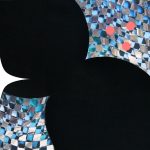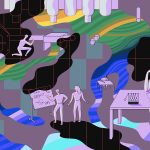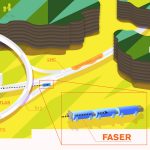From EarthSky, May 2, 2019: University of Chicago physicists and a former Fermilab scientist have laid out an innovative method – using the Higgs boson – for stalking dark matter. He said the Higgs might actually be “a portal to the dark world.”
dark matter
Scientists think that, under some circumstances, dark matter could generate powerful enough gravitational waves for equipment like LIGO to detect. Now that observatories have begun to record gravitational waves on a regular basis, scientists are discussing how dark matter—only known so far to interact with other matter only through gravity—might create these gravitational waves.
Some theorists have taken to designing their own experiments to broaden the search for dark matter. The trend of theorists proposing experiments has become so common that it’s almost expected of new students entering the field. The hope is that flooding the field with new ideas could finally lead to the discovery of dark matter.
From Inside Science, March 6, 2019: Scientists may be able to look for dark matter in rocks that host minerals with which dark matter particles may have interacted. Fermilab scientist Dan Hooper is quoted in this article.
One day in 2017, the idea to detect particles that had potentially been escaping the LHC for years unnoticed by the gigantic detectors suddenly became feasible. The story of the latest experiment approved for installation at the Large Hadron Collider starts with a theorist and a question about dark matter.
For The New York Times, Feb. 25, 2019: Axions? Phantom energy? Astrophysicists scramble to patch a hole in the universe, rewriting cosmic history in the process. Fermilab scientist Josh Frieman is quoted in this article.
From Nature Reviews Physics, Jan. 28, 2019: The Dark Energy Survey completed its six-year-mission to map more than 300 million distant galaxies; however, an equally arduous task — analyzing the acquired 50 terabytes of data with a view to understanding the expansion of the universe — is just beginning.
From APS’s Physics, Jan. 29, 2019: On Jan. 9, a handful of researchers with the Dark Energy Survey — one of the most ambitious attempts to probe the dynamics of the universe’s expansion — headed to the control room of Chile’s Blanco Telescope. For one last time, they opened the white telescope’s dome. From their perch overlooking the red Andean Mountains, they set up for a night of observing the southern sky.
Fermilab’s quantum program includes a number of leading-edge research initiatives that build on the lab’s unique capabilities as the U.S. center for high-energy physics and a leader in quantum physics research. On the tour, researchers discussed quantum technologies for communication, high-energy physics experiments, algorithms and theory, and superconducting qubits hosted in superconducting radio-frequency cavities.
From Quanta, Jan. 9, 2019: Fermilab scientist Alex Drlica-Wagner comments on dark matter in this article on a paradoxical problem in astronomy: New surveys have allowed astronomers to find more satellite galaxies that had previously been hidden. At the same time, updated computer simulations predicted the existence of far fewer galaxies than their predecessors did.




